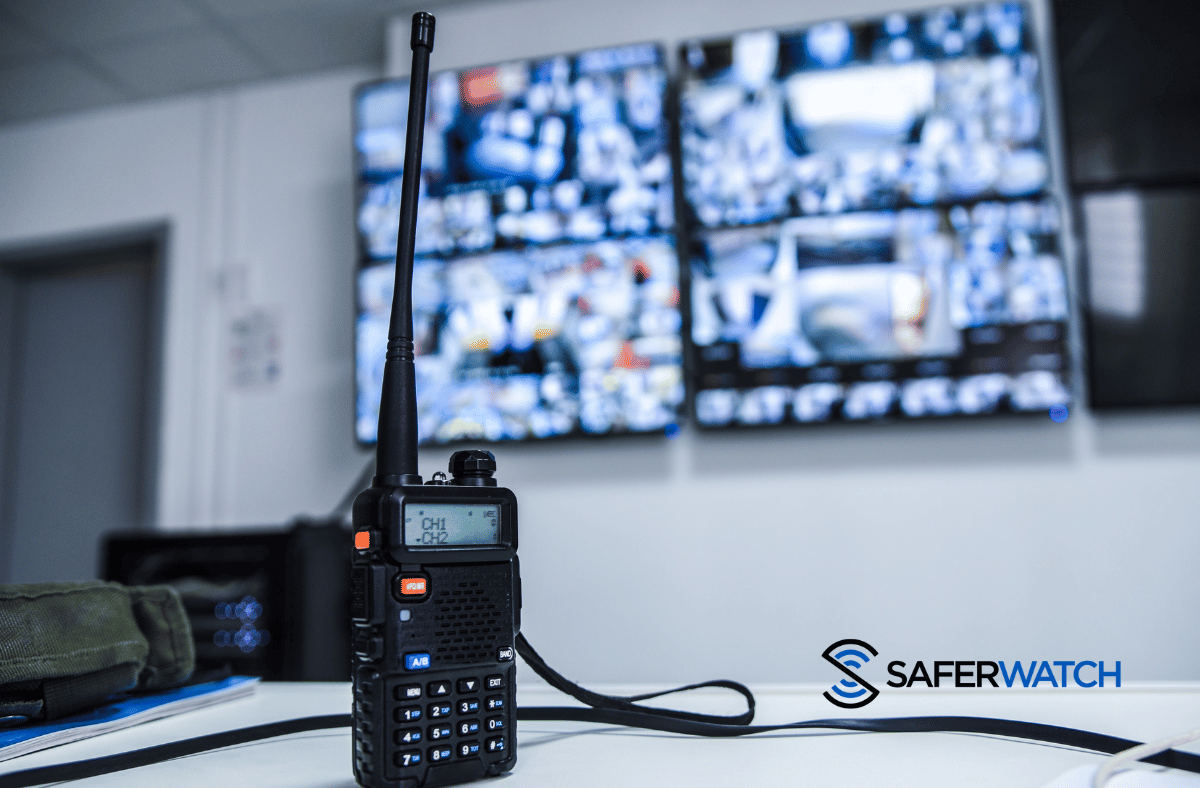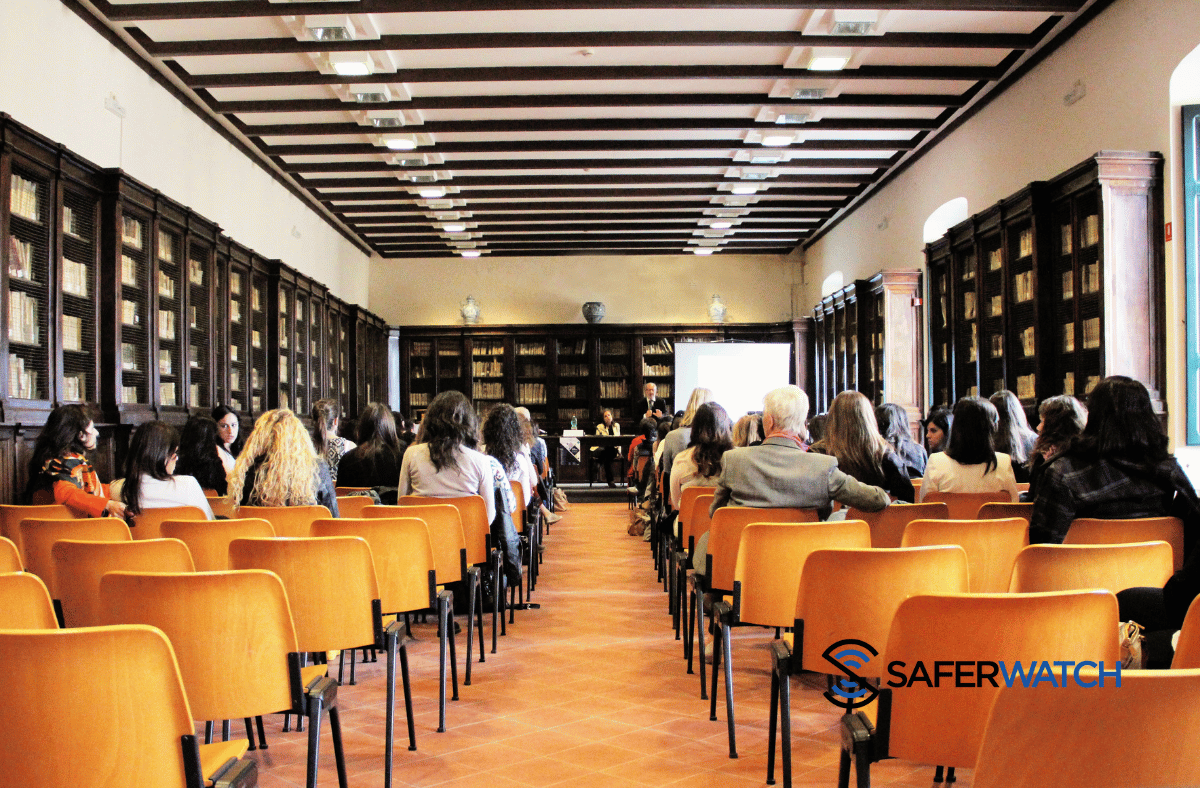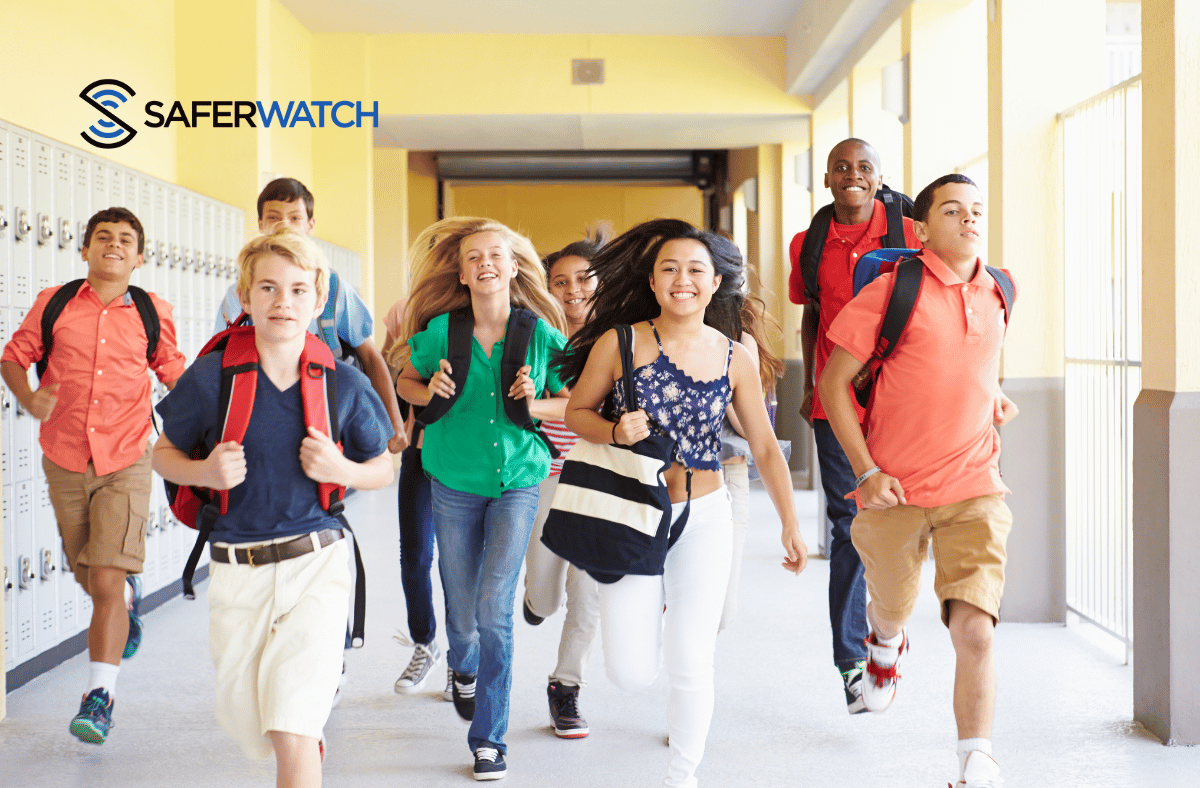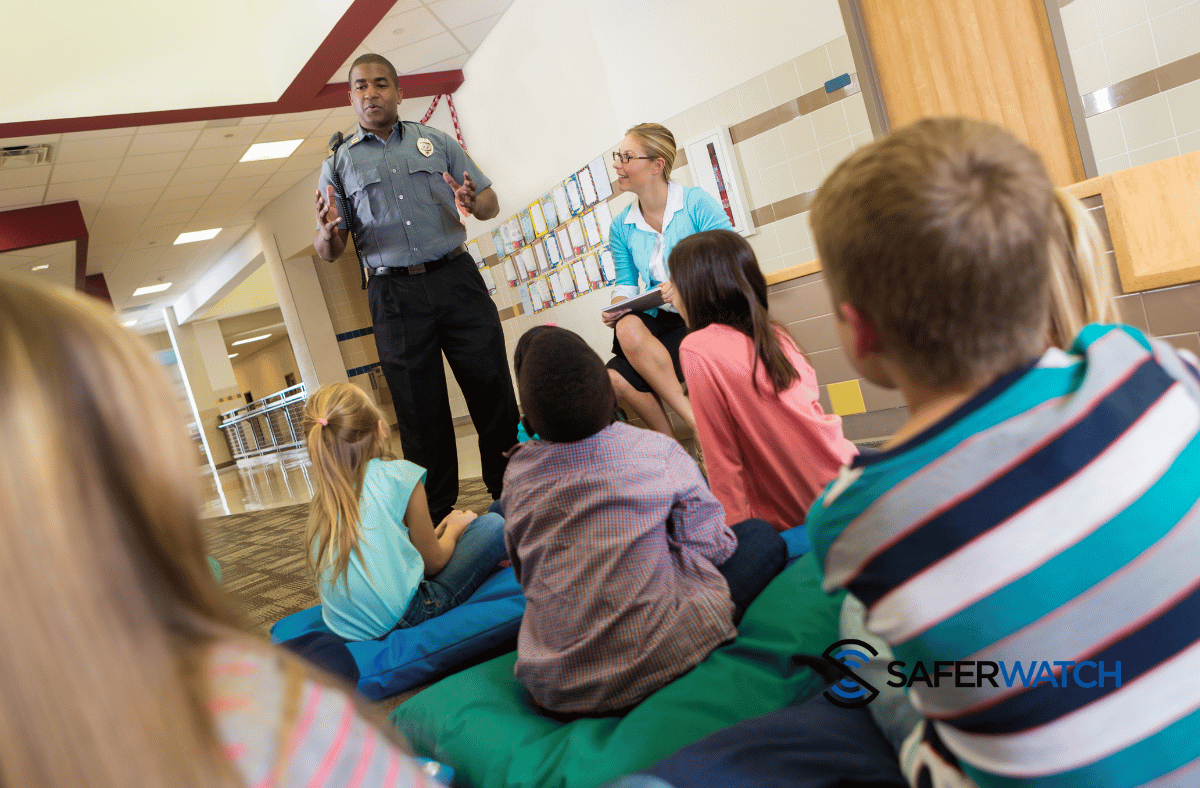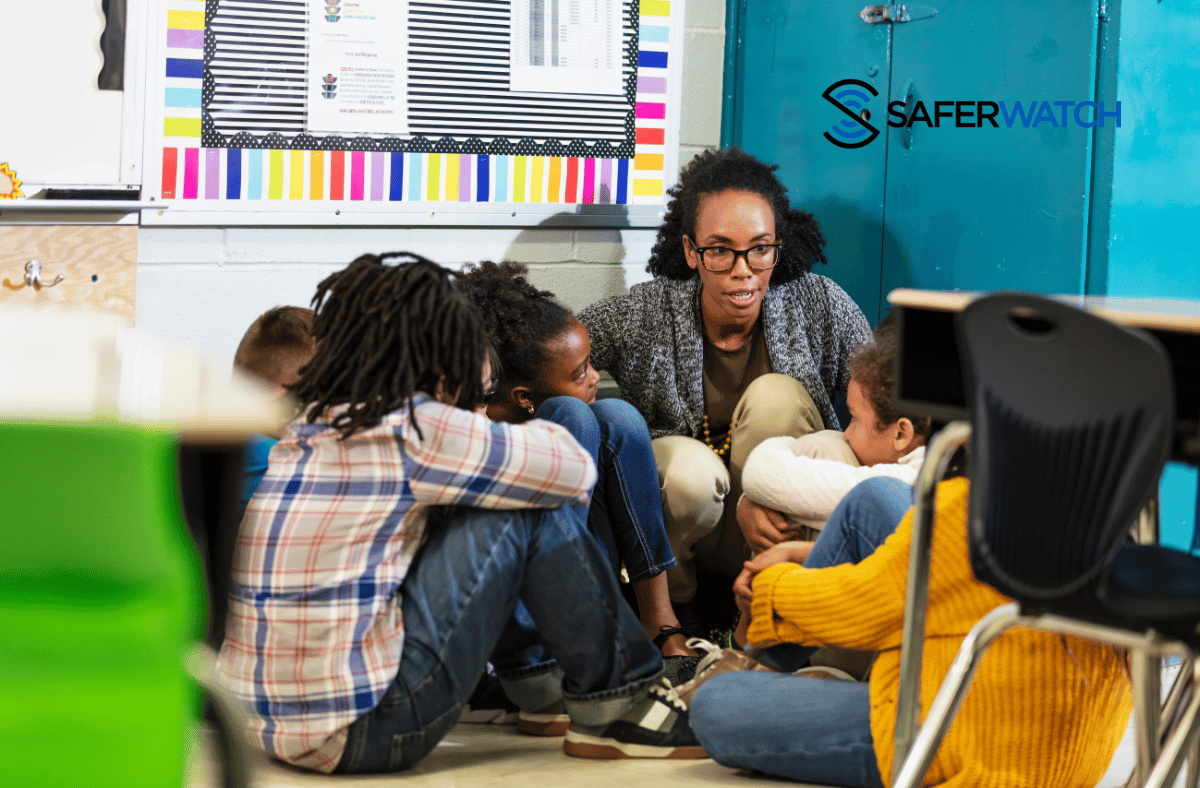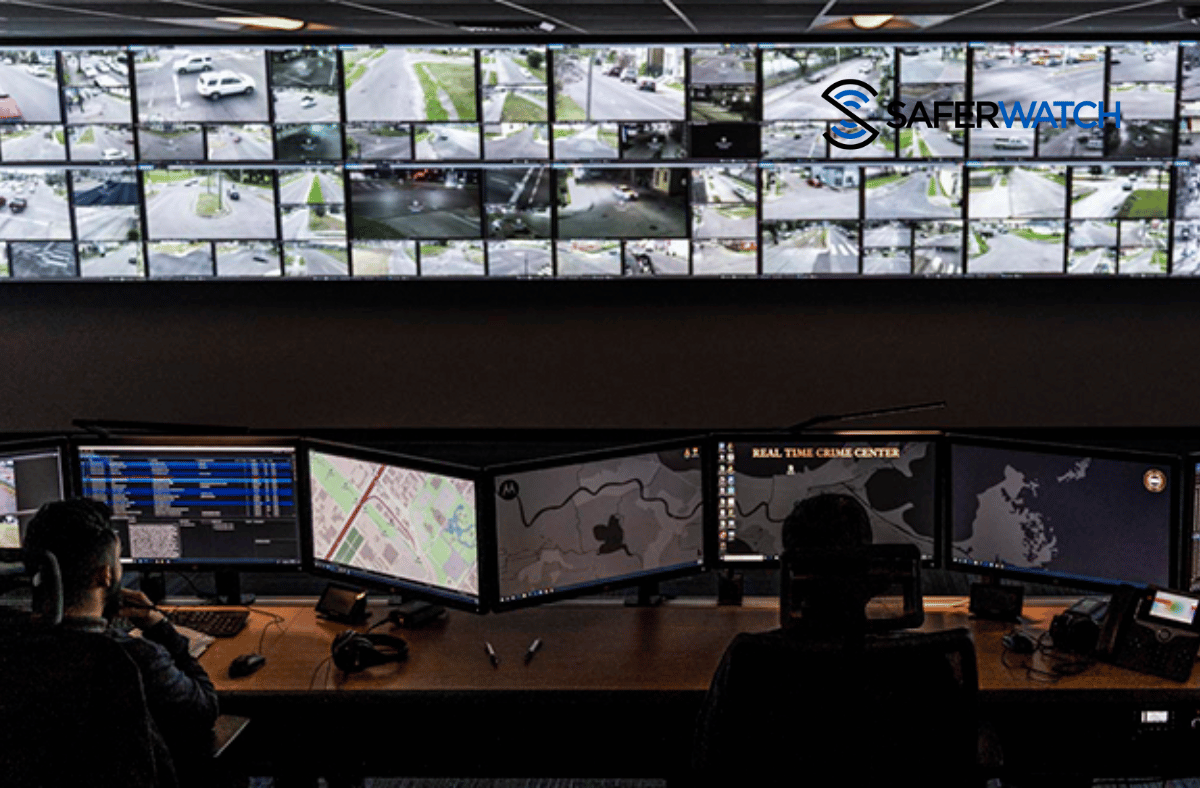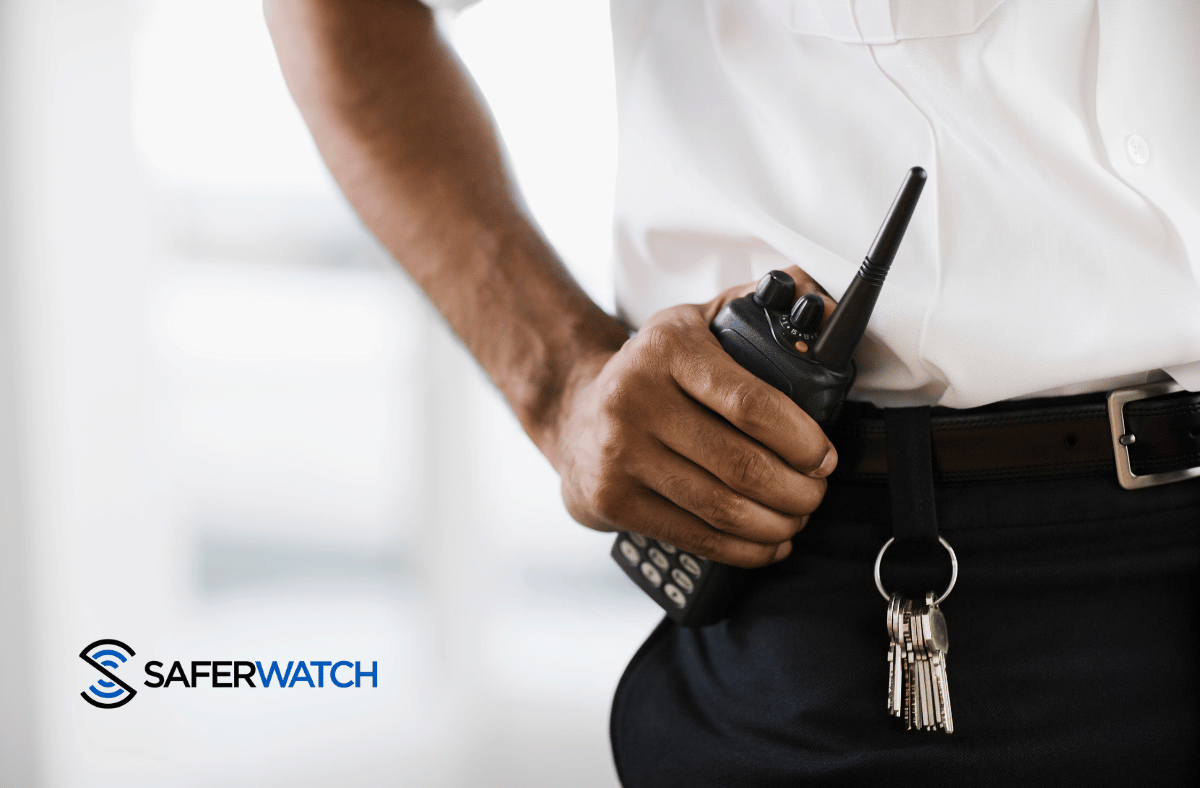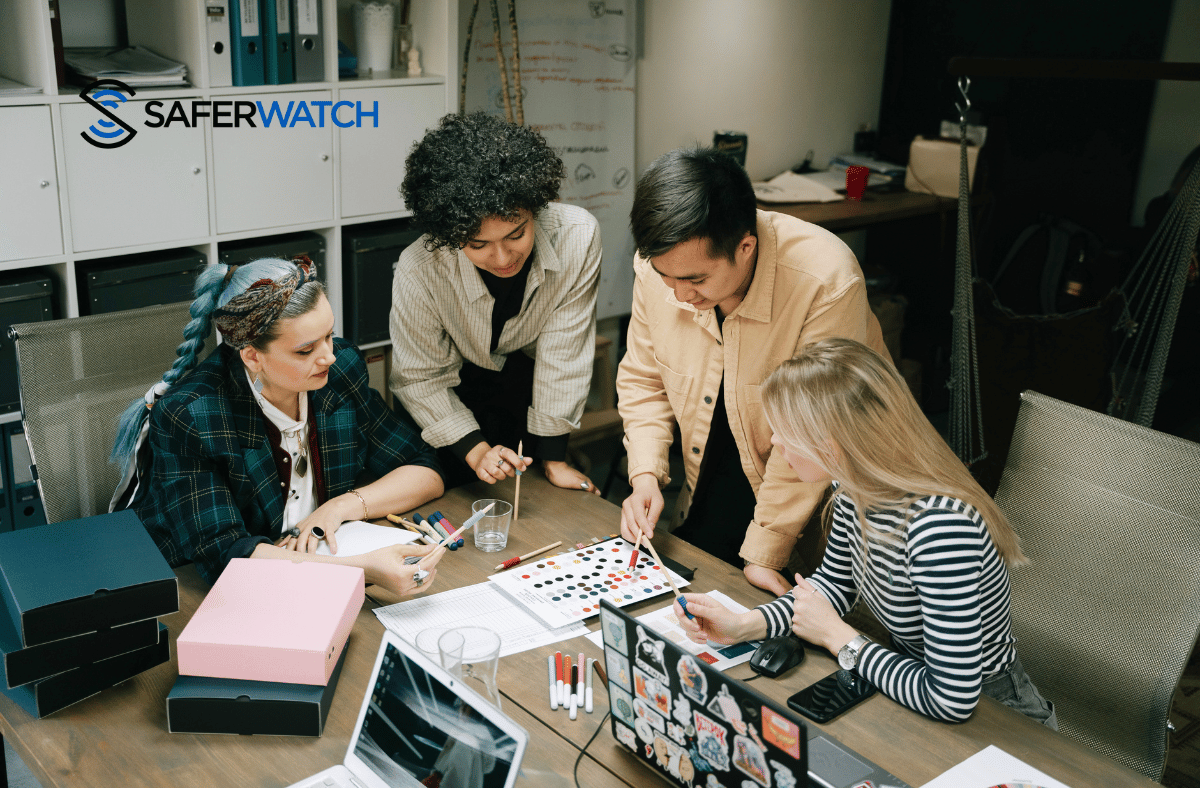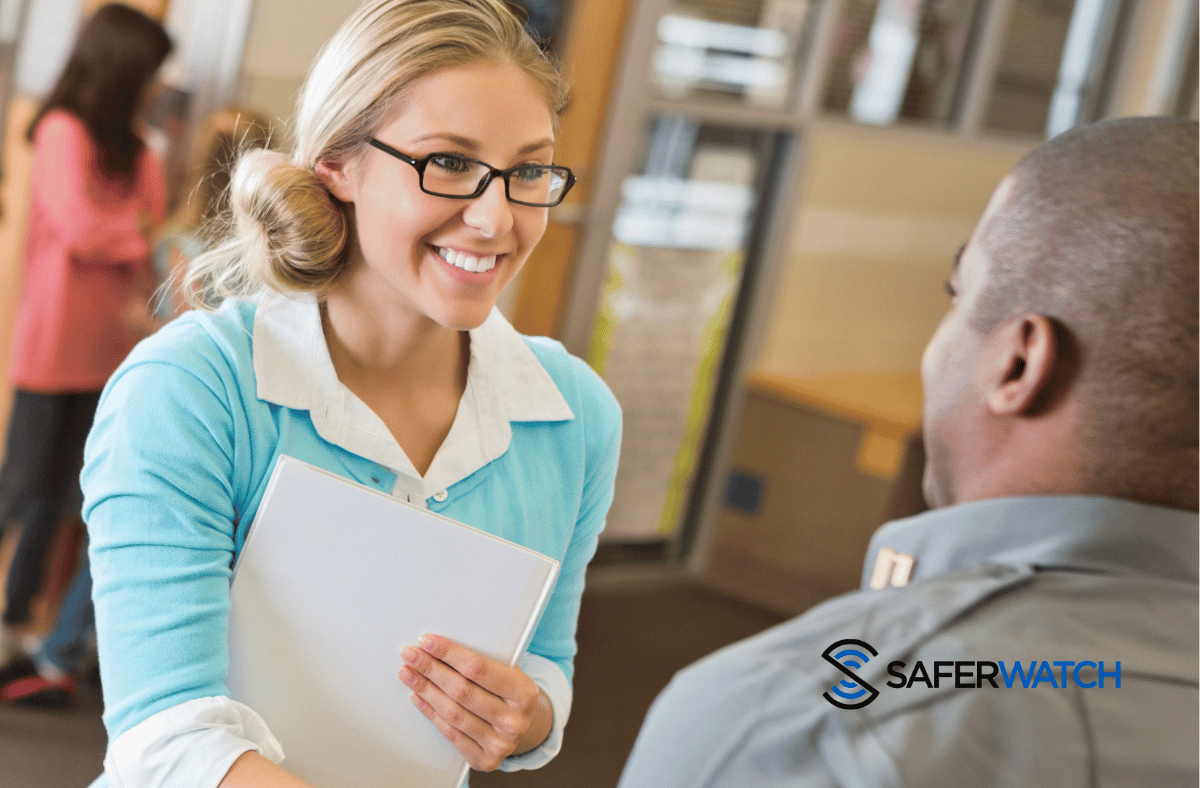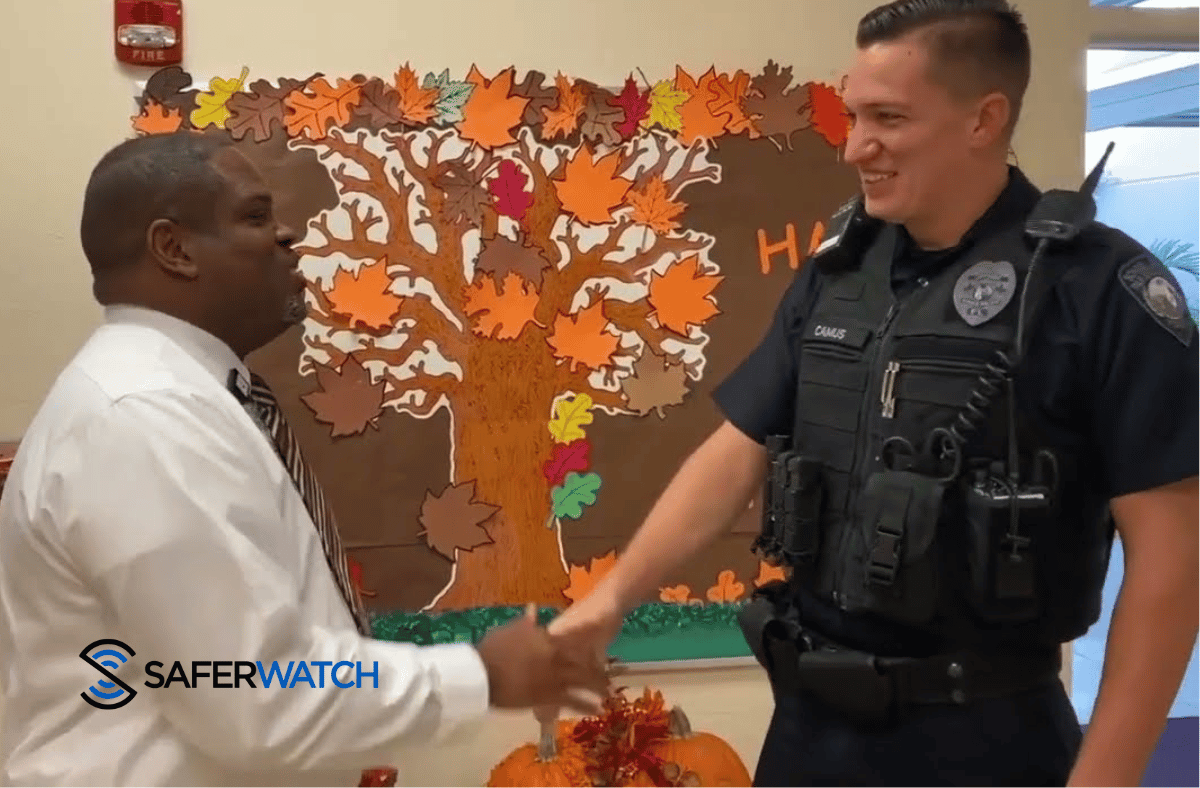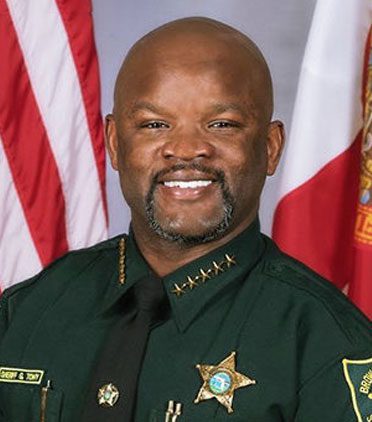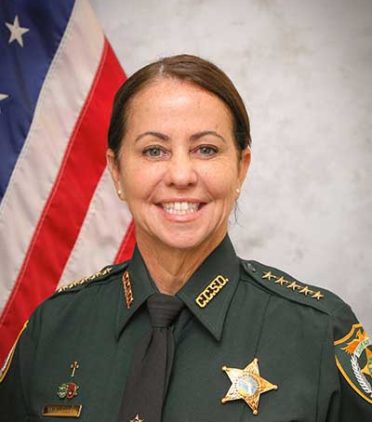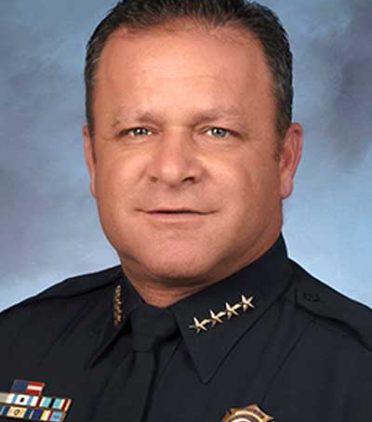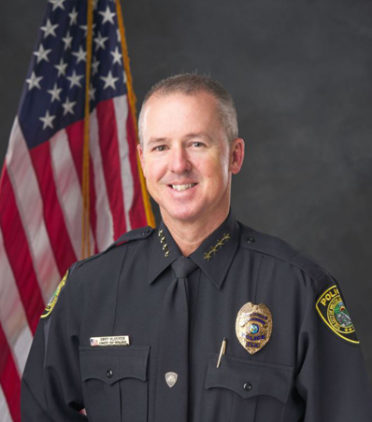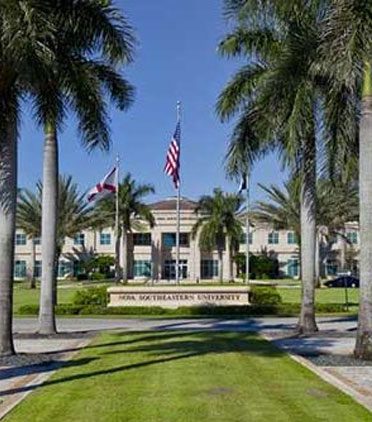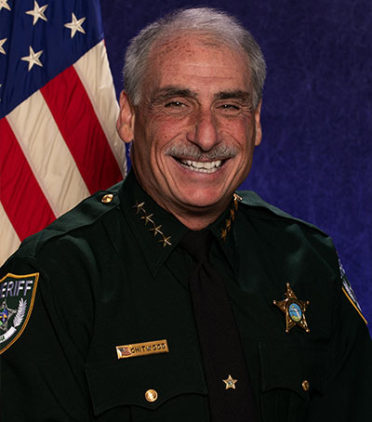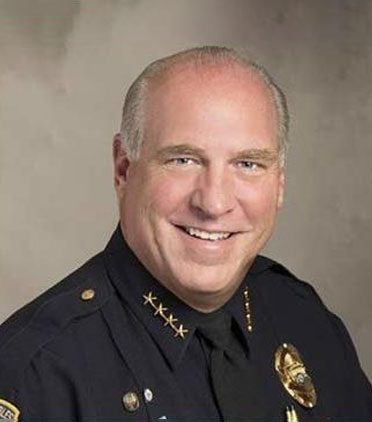How to Make Schools Safer from Shootings: 15 Tips for Improved Safety and Security
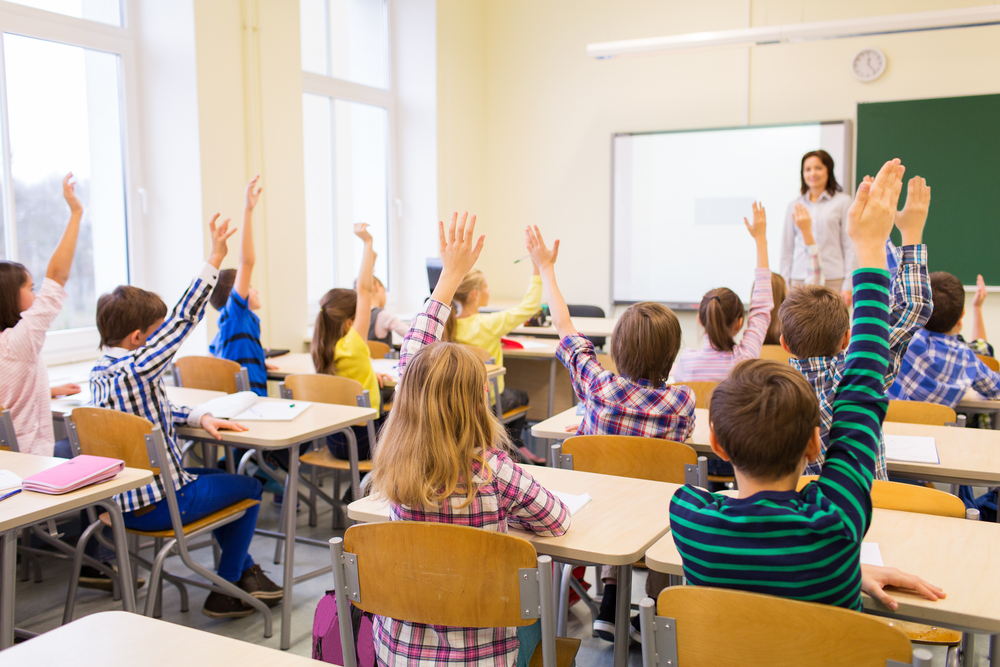
How to Make Schools Safer from Shootings: 15 Tips for Improved Safety and Security
Published on May 26, 2022 and update on August 7, 2023.
It’s every parent and teacher’s nightmare: a shooting at school. When we see images and read reports on gun violence at schools like Robb Elementary School in Uvalde Texas, Columbine High School, and Sandy Hook Elementary, one of the first questions we ask is: how could we have prevented this?
The reality is, we CAN prevent school shootings.
Contact SaferWatch to learn more about anonymous tip reporting, suspicious activity/potential threat reporting, advanced mobile panic alarm solutions, and other tools that protect our students, staff, and faculty using the contact form on this page.
We’re going to take a look at when and why school shootings happen, and then what we, as regular Americans, can do to prevent them from happening in our schools.
School safety and security have never been more important than they are today. As we all strive to create the best possible learning environments for our children, it is crucial to ensure that students, teachers, and staff feel safe and protected while on school grounds.
In this blog post, we will explore 15 tips on how to make schools safer from shootings, focusing on comprehensive security measures, enhanced communication and collaboration, fostering a positive school climate, regular assessments and drills, utilizing technology, investing in professional security services, designing safe school facilities, developing crisis response plans, engaging in ongoing evaluation and improvement, and collaborating with federal and state agencies. By implementing these strategies, we can work together to create safe and supportive learning environments where students can thrive.
Quick Summary
- Implement comprehensive security measures, access control systems and surveillance cameras to enhance school safety.
- Equip staff with regular training and collaborate with law enforcement agencies for unified front in protecting schools.
- Foster positive school climate through bullying prevention, mental health support, student empowerment and emergency drills.
How Much Have School Shootings Increased?
At the beginning of 2019, CNN took a look at how many school shootings occurred in America over the previous ten years. From 2009 to 2018, there were 180 school shootings; 356 students, teachers, and administrators fell victim to gun violence. The statistics are sobering, but the fact that school shootings are increasing is even more terrifying. In 2009, there were 12. In 2018, there were 28.
Mapping these events reveals that most school shootings happen on Fridays, in the afternoon. They happen all over the country, in all types of schools: elementary, middle schools, high schools, private schools, public schools, universities. As we look at these lists, the names of victims, the schools and communities devastated, we have to ask: why? Why are they increasing?
Why Does Gun Violence Occur in Schools?
While it’s difficult, nearly impossible really, to pinpoint why gun violence in schools is increasing, law enforcement experts believe they know the primary reason: diminished coping skills.
“We have kids who are so isolated inside,” Mike Clumpner, a police officer who specializes in active shooter training says, “they don’t learn those problem-solving skills.” Isolation happens in many ways: they’re glued to technology or perhaps their parents and caregivers are the ones sucked into a screen. They don’t learn coping and conflict resolution skills, so when they get angry, they lash out in violent ways.
Depression is one the largest contributing factors, Reid Meloy, a forensic psychologist explains. Depression is often the first symptom of isolation. Most, but not all, shooters suffered from depression and/or paranoia, particularly those who were adolescents. While we can’t blame mental health issues for school shootings, they are a risk factor.
These mental health issues for our students often occur because of childhood trauma, but also marginalization. The U.S. Secret Service and U.S. Department of Education found that nearly 75 percent of school shooters were bullied or harassed at school. In other words, the isolation of our students doesn’t just come from video games and technology, it also comes from their peers.
Alfred University conducted a survey of American students on school shootings. The top reason they gave for a school shooting: “They want to get back at those who have hurt them.” Eighty-seven percent of students cited this as the reason.
Another factor: access to firearms. The U.S. Secret Service conducted two significant studies that showed more than 73 percent of the firearms school shooters acquired were from the home of a parent or a close relative.
In 2015, 16 percent of students in grades 9-12 said they had “carried a weapon at least one day during the previous 30 days” and 4 percent said they had brought them on to school property. Our students having access to firearms does increase the chance of them being brought to school.
But it’s more than just access — it’s the combination of struggling with isolation or mental health and the access to guns. Those struggling with suicidal thoughts or fantasies about “getting back” at their abusers with access to guns may turn these fantasies into reality.
What are the Warning Signs for School Attackers?
So what are the warning signs of an attacker? As educators, parents, or community members, what should we watch for?
Between 2000 and 2013, the FBI studied pre-attack behaviors of active shooters in schools. Their findings are detailed and extensive, but here’s a quick list of things to watch for, based on what they found:
- 55% of school shooters had made threats or had a confrontation with their target. This could mean a teacher or their peers.
- 62% of school shooters struggled with mental health issues. While it is often impossible to determine whether or not someone is dealing with mental illness, it is still something to be aware of.
- 90% of school shooters showed signs of suicidal ideation and 23% attempted suicide before a shooting.
- 88% of active shooters under the age of 17 communicated an intent to commit violence, either verbally or on social media.
In summary: keep an eye on students who are struggling with mental illness and/or communicate violent tendencies in any way.
How School Shootings Affect Survivors
Beyond the physical danger of a school shooting, many parents and educators are deeply concerned with the psychological effects on their students and faculty. Sanford University researchers call it the “silent cost” and it’s taking a major toll on our children.
Researchers saw a huge spike in the use of antidepressants in youth in the communities where shootings took place, rising 21 percent even years after the incident. As Maya Rossin-Slater, a faculty and researcher at Stanford, said: “There are real consequences on an important marker of mental health.”
Some teachers also noted that kids who usually maintained a high GPA started to struggle in class. Parents reported nightmares and trouble sleeping, and teachers reported attendance and tardiness issues.
All of these make sense: they’re going back to the scene of trauma. For students who have never experienced a school shooting, fear is present, too. But, luckily that fear seems to be decreasing.
As parents, we want to empower our students to not only thrive at school but to also take action if they think something is wrong.
Are Students Willing to Report a Threat?
In the FBI study mentioned previously, they found that most of the people who noticed concerning behaviors were schoolmates. And by most, we mean 92%. But if their peers notice these red flags, will they report it?
In their study on lethal school violence, Alfred University found that only about half of students would tell an adult if they heard someone talking about shooting another student at school. While this seems like a low percentage, even more concerning is that a quarter of these students said that “teachers need to care more about their students” and 13% said that “nothing can be done to stop school shootings.”
How can we encourage our students to report threats? Based on Alfred University’s findings, it looks like telling an adult isn’t necessarily the best way. Providing a no-contact method of reporting could be a solution — something safety app SaferWatch can do. Further, SaferWatch allows users to report an incident anonymously, which alleviates some of the hesitation a student may feel.
Another solution? Take reports seriously. Show our students that when they do report a possible threat that we believe them and we’re going to do something about it.
What We Can Do About Gun Violence in Schools
It’s easy to feel powerless. It’s easy to look at a school shooting and think: I can’t do anything to stop this.
But the reality is, WE CAN.
Not sure where to start? Here are five things you can do to help prevent school shootings in your community:
- Advocate and push for more counseling at schools. On average, there are around 450 students assigned to each school counselor. Having better access to counselors can greatly reduce the risk of gun violence among our students.
- Encourage help for and normalize mental health issues. Incredibly, simply acknowledging that we’re struggling encourages others to reach out for help. Talk about it at home. Model good self-care for your kids and encourage them to ask for help when they’re feeling low.
- If you have a gun in your home, make sure it is inaccessible. Store your firearms safely. Keep them out of reach of children and locked away from adolescents. Remember: more than 70 percent of school shooters got their firearms from relatives.
- Vote for reasonable gun control laws. In states that require background checks on gun sales, there are 35 percent fewer gun deaths per capita.
- Create a way for students, faculty, and staff to report potential threats. Whether it’s an app like SaferWatch or a place to write anonymous tips in the counseling office, having a place to report potential threats not only helps prevent gun violence, it also helps our students feel safer.
How You Can Help To Improve Your School’s Safety
We can do this. Together, we can prevent gun violence in our schools. With some effort and some education, we can create a brighter, safer future for our students.
Encourage Your School To Contact Us
Contact SaferWatch to learn more about:
- Anonymous tip reporting
- Suspicious activity/potential threat reporting
- Advanced mobile panic alarm solutions
Implementing Comprehensive Security Measures
Creating a safe learning environment starts with implementing comprehensive security measures to protect students, staff, and school property. Access control systems, surveillance cameras, and school resource officers are foundational ways to enhance school safety and deter potential threats. To further improve school security, it is essential to regularly assess and update these measures as needed, including staying informed on relevant school safety topics.
These measures not only help prevent school violence, but also provide peace of mind for everyone on campus, knowing that their safety is a top priority.
Access Control Systems
Access control systems play a vital role in enhancing school security by limiting and monitoring entry points to the school premises. By implementing advanced access control systems such as smart card technologies, mobile access solutions, and other devices, schools can effectively prevent unauthorized individuals from entering the premises and maintain a record of who has entered and exited the school. Additionally, federal funding or support may be available to help schools implement these systems, further improving school safety and security.
However, it is important to keep in mind that access control systems alone are not enough to guarantee a secure learning environment. They should be part of a broader security strategy that includes other measures such as surveillance cameras, school resource officers, and ongoing staff training.
Surveillance Cameras
Surveillance cameras serve as both a deterrent and a means of monitoring activity within and around school grounds. By strategically placing video surveillance equipment both inside and outside the school, potential threats can be identified and addressed before they escalate. However, it is crucial to balance the need for security with privacy concerns by ensuring that cameras are used appropriately and in accordance with regulations.
It’s also essential for schools to regularly review and update their surveillance equipment to ensure that it remains effective in detecting and preventing potential threats. This includes evaluating camera placement, resolution, and other technical specifications, as well as ensuring that staff is trained in how to properly monitor and respond to potential security incidents.
School Resource Officers
School resource officers (SROs) are an integral part of school safety, serving as a visible security presence and acting as a liaison between the school and local law enforcement. SROs are trained in various scenarios, including responding to emergencies, investigating criminal activity, and offering guidance and support to students. By working closely with school administrators, teachers, and students, SROs help create a secure learning environment where everyone can focus on their education without fear of violence or disruption.
In some cases, SROs may receive additional training or support from homeland security agencies to enhance their skills and effectiveness in maintaining school safety. By fostering strong relationships between schools and law enforcement agencies, we can create a united front against school violence and ensure that our children are safe and secure while they learn.
Enhancing Communication and Collaboration
Effective communication and collaboration among staff, law enforcement, and the community are crucial in creating a united front against school violence. By implementing two-way communication systems, providing regular staff training, establishing partnerships with local law enforcement agencies, and encouraging community involvement in school safety initiatives, we can create a supportive network that works together to enhance school safety.
This network can be achieved by encouraging open dialogue between staff, law enforcement, and the community.
Staff Training
Providing regular staff training on safety protocols, threat identification, and crisis response is essential in ensuring that school personnel are well-equipped to handle emergency situations and maintain a safe learning environment. Through comprehensive training programs, staff can become proficient in their roles and better prepared to respond to potential threats, contributing to both improved performance and a more secure school environment.
Training should not only focus on physical security measures, but also on recognizing potential risks and addressing them proactively. This includes training on how to respond to active shooter situations, bomb threats, and other emergency scenarios appropriately, ensuring that staff and students know what to do in case of an emergency.
Law Enforcement Partnerships
Establishing strong partnerships with local law enforcement agencies is vital in ensuring school safety and security. By engaging in regular communication and coordination with law enforcement, schools can access valuable resources, training, and expertise that may not be available to them otherwise. These partnerships can also help ensure that school safety and security measures are up-to-date and in adherence with federal and state laws and regulations.
To create meaningful partnerships with local law enforcement agencies, schools should invite officers to participate in school activities, attend meetings with school administrators, and provide instruction and resources to school personnel. By working together, schools and law enforcement agencies can develop a comprehensive approach to school safety and security that addresses potential risks and provides the necessary resources to prevent and respond to school shootings and other violent incidents.
Community Involvement
Encouraging community involvement in school safety initiatives is essential in creating a supportive network that works together to enhance school safety. By implementing neighborhood watch programs, police surveillance, and parent volunteer groups, schools can foster strong ties between the school and the community, creating a sense of ownership and accountability for school safety.
Active community involvement not only helps to augment school safety efforts, but also provides additional resources and support for school safety programs.
Fostering a Positive School Climate
Fostering a positive school climate is critical in preventing school violence and ensuring a safe and supportive learning environment for all students. By addressing bullying, providing mental health support, and empowering students to take an active role in their own safety, schools can create a nurturing atmosphere where students feel safe and can concentrate on their education.
Schools can take a number of steps to foster a positive school climate. These include implementing the program.
Bullying Prevention
Implementing bullying prevention programs and policies is essential in creating a safe and inclusive environment for all students. In the 2008-09 school year, 28 percent of students aged 12-18 experienced bullying at school, highlighting the need for comprehensive prevention strategies.
Bullying prevention efforts should focus on educating students about the serious consequences of bullying, harassment, and violence, as well as providing resources and support for those who have experienced bullying. By creating a culture of respect and inclusion, schools can help reduce instances of bullying and violence, ensuring that all students feel safe and supported in their learning environment.
Mental Health Support
Offering mental health support services for students and staff is vital in managing stress, anxiety, and other mental health concerns. By providing counseling services, crisis intervention, and access to professional care, schools can address the mental health needs of their students and staff, contributing to a safer and more supportive learning environment.
Mental health support can also play a role in preventing school violence by helping students cope with social isolation, emotional challenges, and other factors that may contribute to violent behavior. By addressing the mental health needs of students, schools can create a more inclusive and nurturing learning environment for all.
Encouraging Student Empowerment
Empowering students to take an active role in their own safety and well-being is an important aspect of fostering a positive school climate. By implementing peer mentoring programs, conflict resolution initiatives, and anonymous reporting systems, schools can help students develop the skills and confidence needed to address potential threats and contribute to a safer learning environment.
By encouraging student empowerment, schools can help create supportive learning environments where students feel safe and can focus on their education.
Conducting Regular Assessments and Drills
Conducting regular assessments and drills is crucial in identifying potential threats and ensuring preparedness in case of an emergency. By performing threat assessments to evaluate risks and vulnerabilities within the school environment and conducting emergency drills, such as lockdowns and active shooter scenarios, schools can train staff and students on appropriate response procedures and help prevent potential incidents.
These assessments and drills can help create a safe and secure learning environment for students and staff.
Threat Assessments
Performing threat assessments is an essential part of school safety, as it allows schools to evaluate risks and vulnerabilities within the school environment. In the 2019-20 school year, 64 percent of schools reported having a threat assessment team, with schools in cities (67%) and suburbs (71%) more likely to have one than those in rural areas (56%).
Threat assessments should be conducted by a team of professionals, including school staff, school psychologists, and law enforcement officials, to evaluate potential risks and vulnerabilities within the school setting. By working together to identify and address potential threats, schools can create a safer and more secure learning environment for all students.
Emergency Drills
Conducting emergency drills, such as lockdowns and active shooter scenarios, is essential in training staff and students on appropriate response procedures during an emergency situation. These drills help ensure preparedness and familiarize individuals with the actions they need to take in case of an emergency, ultimately contributing to a safer school environment.
It is crucial that schools conduct regular drills and evaluate their effectiveness to address any potential weaknesses or areas for improvement.
Utilizing Technology for School Safety
Utilizing technology can play a significant role in enhancing school safety. It can provide safety applications, reporting tools, and digital security measures. By implementing these technologies, schools can more effectively monitor and address potential threats. This ensures a safer and more secure learning environment for students, teachers, and staff.
Safety Apps and Reporting Tools
Safety apps and reporting tools can greatly contribute to school safety by providing incident reporting, hazard identification, safety inspections, and real-time communication. These tools enable users to report safety concerns, track incidents, conduct audits, and share essential information with applicable stakeholders, ultimately enhancing school safety and security.
Examples of popular safety apps and reporting tools include SafetyCulture, EHS Insight, Safesite, and AppArmor Report.
Digital Security Measures
Prioritizing digital security is essential in promoting safe internet usage, monitoring online activity, and protecting sensitive information. Schools should ensure that staff and students are aware of potential security threats, such as phishing scams, and implement measures to prevent unauthorized access to data and systems.
By promoting safe internet habits and implementing digital security measures, schools can protect both the online and physical safety of their students and staff.
Investing in Professional Security Services
Investing in professional security services, such as security guards and consultants, is an important aspect of enhancing school safety and security. Security guards can provide a visible security presence on school grounds, while consultants can offer expert guidance on the most suitable security measures for a school, including access control systems, surveillance cameras, and school resource officers.
By seeking the expertise of professional security services, schools can ensure that their safety measures are up-to-date, effective, and tailored to the unique needs of their school community. Additionally, professional security services can help schools develop comprehensive crisis response plans and conduct regular evaluations and drills to ensure preparedness in case of an emergency.
Designing Safe School Facilities
Designing school facilities with safety in mind is essential in creating a secure learning environment for students, teachers, and staff. By implementing secure perimeters, well-lit exteriors, and strategically placed surveillance equipment, schools can deter potential threats and ensure that everyone on campus feels safe and protected.
Additionally, integrating motion sensors in school lighting systems can minimize the risk of slips and falls and deter unauthorized access.
Developing a Comprehensive Crisis Response Plan
Developing a comprehensive crisis response plan is crucial in outlining roles, responsibilities, and procedures for staff, students, and first responders during an emergency. A well-crafted crisis response plan should include preparedness procedures such as lockdowns, evacuations, and emergency communications protocols, ensuring that everyone knows what to do in case of an emergency.
By having a comprehensive crisis response plan in place, schools can better protect their students and staff and minimize the impact of emergency situations.
Engaging in Ongoing Evaluation and Improvement
Engaging in ongoing evaluation and improvement of school safety measures is essential in ensuring that policies and procedures remain up-to-date and effective. By consistently monitoring and assessing performance, schools can identify areas that require improvement and adjust their safety measures accordingly. This may involve developing new policies and procedures, providing additional training and resources, or making necessary adjustments to existing systems.
By continually evaluating and improving their safety measures, schools can improve school safety, creating a safer and more secure learning environment for all students.
Collaborating with Federal and State Agencies
Collaborating with federal and state agencies can provide schools with valuable resources, funding, and expertise in school safety and security. By engaging in consistent communication and coordination, initiating and executing joint initiatives, and leveraging the strengths of each agency, schools can develop a comprehensive approach to school safety and security that addresses potential risks and provides the necessary resources to prevent and respond to school shootings and other violent incidents.
By working together, schools and federal government agencies can create a safer and more secure learning environment for all students.
Full Summary
In conclusion, ensuring school safety and security is a multifaceted endeavor that requires the collaboration of schools, law enforcement, and the community.
By implementing comprehensive security measures, enhancing communication and collaboration, fostering a positive school climate, conducting regular assessments and drills, utilizing technology, investing in professional security services, designing safe school facilities, developing crisis response plans, engaging in ongoing evaluation and improvement, and collaborating with federal and state agencies, we can work together to create safe and supportive learning environments where students can thrive.
SaferWatch technology and services are a crucial resource for children, caregivers, and educators. Contact SaferWatch to learn more about advanced mobile panic alarm solutions and other tools that prevent crises and ensure safety in educational facilities. Call today to schedule a free demo: 844-449-2824.
Remember that in some cases, there are government grants for school safety that can subsidize an emergency alert system like SaferWatch.
Frequently Asked Questions
How can schools provide a safe environment?
Schools can create a safe and supportive environment that promotes respect and inclusion, ensures students interact safely and engages all staff to set a tone of respect.
This environment should be one where everyone feels respected and included, and where students can interact safely. All staff should be engaged in setting a tone of respect and creating an atmosphere of acceptance.
What’s the best way to ensure students’ safety security and well-being?
To ensure students’ safety, security, and well-being, schools should implement security measures such as secured perimeters, limited access points, surveillance monitoring, policies to combat bullying, positive student/teacher relationships, anonymous tip reporting tools, and encourage peacemaking.
These measures should be tailored to the individual school’s needs and should be regularly reviewed and updated to ensure they are effective. Schools should also provide training to staff and students on how to respond to security threats and how to use the security measures in place. Finally, schools should ensure that all security measures are properly enforced and monitored.
Why should school security be increased?
Increasing school security is essential to protect students and staff in light of recent violent incidents targeting schools. Professional security guards can help create a safe environment for everyone on campus to thrive.
Schools must take proactive steps to ensure the safety of their students and staff. Security guards can provide an extra layer of protection, monitoring the premises and responding quickly to any potential threats.
How can schools collaborate with local law enforcement agencies to enhance safety?
Schools can collaborate with local law enforcement agencies by communicating regularly, inviting officers to school activities, and providing instruction and resources.
This collaboration can help to build trust between the school and the community, as well as create a safe and secure learning environment for students.
Schools can also provide resources to law enforcement agencies.
What role does a positive school climate play in preventing school violence?
A positive school climate is essential for deterring school violence, as it addresses bullying, provides mental health support and empowers students to take an active role in their own safety.
Creating a positive school climate is not a one-time event, but rather an ongoing process that requires the commitment of all stakeholders. It involves creating a safe and supportive environment that encourages positive behavior, respect for diversity, and a sense of belonging.
SaferWatch In the News:
- Motorola Solutions and SaferWatch Align to Support School Safety
- App Developed for Educators In Case of A School Shooting
- BCPS Unveils Alyssa’s Alert In New Initiative To Add Additional Layer of Security for Students and Staff
- Stand With Parkland Partners With SaferWatch Mobile App to Protect Schools
- Alyssa’s Law Reviewed by MSD Commission
- BCPS uses SaferWatch app to comply with Alyssa’s Law
- BSO: 12-Year-Old Boy Arrested For Making School Shooting Threat
- Fort Lauderdale Police Investigate Three School Threats
